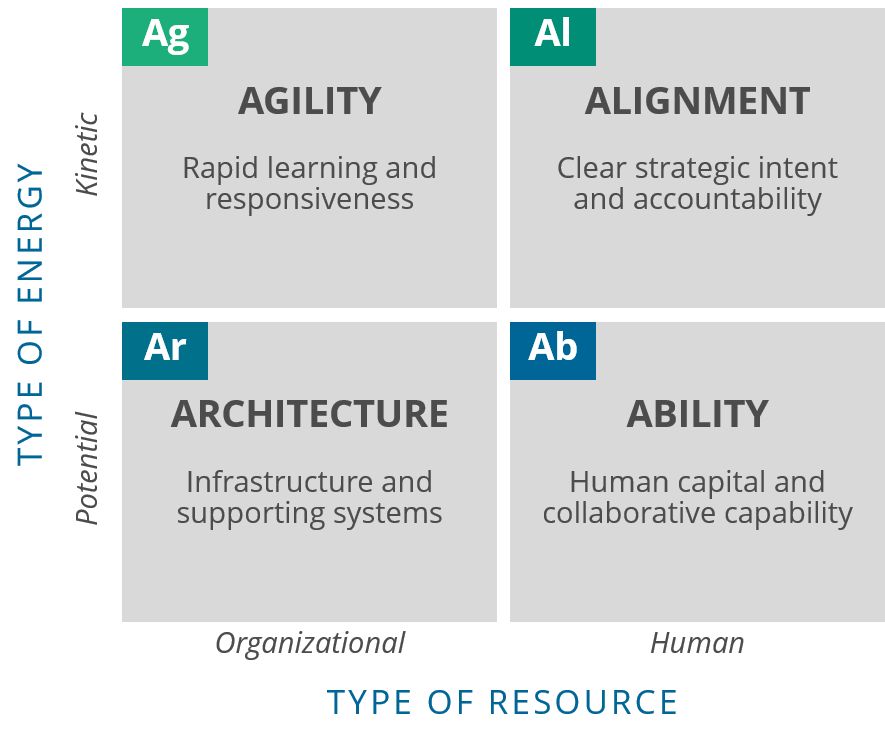Planning frameworks set our teams up for the best success in guiding the way we build and measure goals. The problem with frameworks is that there are so many options that selecting one is a paralyzing process.
Balanced Scorecard, Six Sigma, OGSTM, Gap Planning, OKRs, PESTEL Analysis, Scenario Planning, Blue Ocean Strategy, Five Forces Framework, VRIO Framework, Hoshin Planning, Issue-Based Strategic Planning – you feel like a kid in a candy store with all these options.
Choose a Planning Framework that Works for You – When Nobody’s Looking
For those that hire consultants to help build their plans, it’s fairly common for different consulting firms to have their own way of doing things. Any way that deviates from their chosen method is quickly dismissed. This is what they do, and they do it well.
This works when the consultant is engaged with your organization, but when their contract is up, you need a methodology you can perpetuate on your own. While that framework can sometimes work, most of the time it’s incongruous with your company culture or requires a lot of change management.
Other times, senior management may want to use the trendy methodology from last month’s conference that helped that other portfolio company increase their bookings by 11%.
It’s sort of a chicken-or-the-egg dilemma. Should you go with a methodology that works for your team, or get your team to work for the methodology?

When it comes time to choose, err on the side of flexibility. Having a strong process is great, but the best kinds of framework are responsive to change. You can’t succeed in today’s market without agility. Look for one that guides you in the right direction but doesn’t stymie progress with rigidity.
The Secret? It Doesn’t Matter Which Framework You Choose
From our perspective, there’s no single methodology that works best for everyone. The good news is you can’t choose a “wrong” planning framework as long as you put in the work to get everyone engaged, get all your plans in view, and set up a regular cadence of accountability.
Our AchieveIt Consulting Team is methodology agnostic. No matter what direction our customers take to create their plans, they invested energy, time, and resources into this framework because they believe in it. We work with any method to add missing elements to their plans to make sure they can be executed most effectively. (And unlike traditional consultants, we partner with you for as long as you’re using the AchieveIt platform!)
The most important things to remember are 1) your stakeholders have to understand the framework, 2) the methodology has to work with your team, and 3) no matter what framework you’re using – you must have due dates and measurements along the way.
Use the 4A Model as Your Plan Framework Litmus Test
In finding a flexible framework from which to build your plan, I recommend using the 4A Model to help double-check your choice.
Developed by Scott Snell and Ken Carrig from the University of Virginia Darden School of Business, the strategy framework called the 4A Model, helps plan leaders organize their company’s areas of growth by focusing on four primary factors that enable execution excellence: alignment, ability, architecture, and agility.
No matter which framework your organization chooses, dig into each of these four As to make sure your plan has initiatives addressing all of them. By tying each of your initiatives to bettering one of these four factors, you’ll start seeing results right away.
What Are the 4 As?
Snell and Carrig place the 4As on an x-axis – Type of Energy (Potential and Kinetic) vs. Type of Resource (Organizational and Human).

Agility
Examine your ability to move quickly and confidently in response to environment and strategy. Cultivating a dynamic environment allows your organization to learn rapidly and make better decisions.
In building your plan, agility is the usual culprit in throwing off your balance. By weighting the importance of agile reaction too heavily, you run the risk of losing foresight and long-term goals in direct response to short-term impacts.
Create initiatives that engage these rapid response mechanics in your organization so you can fall back on the skill when you need it.
Alignment
The most straightforward to understand, alignment is sneakily elusive. You think you have a strongly aligned strategy, but is alignment a part of your culture?
If you’re having trouble engaging employees, build alignment into your plan and into your culture by showing how even the smallest tasks roll up to support enterprise-wide goals.

By analyzing your plan initiatives for alignment, work to make sure your departmental silos are connected. While each team will specialize in their own work, having interconnected visibility into how their work aligns to other teams’, your company will develop a cohesive responsibility and start pushing forward in the same direction.
Alignment can also help you identify if you’re working on the “right” things – if your tactics are driving results – or too many things – if your input resources are outnumbered by outputs.
Architecture
Architecture is your foundation. Do you have the systems in place to execute your plan?
By using Architecture as one of your major initiative buckets in building your plan, you can choose projects that support the analysis of your organizational infrastructure.
This is where most Performance Improvement initiatives lie; constantly refine your processes, reassess your resources and expenditures, and check all your decision-making processes for bottlenecks and undue bureaucracy. There’s a delicate balance between these things, and they’re different for every organization.
Simplify.
Ability
Finally, you have to enable your organization with the human capital to execute your plan.
Whether it’s taking on initiatives that support training, technology, or hiring, you must dedicate execution time to multiplying your talent and leveraging your workforce in the most impactful way possible.
Choose plan goals that improve performance on an individual as well as a macro level, and you have the last piece to your execution excellence puzzle.
No Matter Which Framework You Choose, Check Your Plan with the 4A Model
No matter which framework works best for your organization, using the 4A model to perform a sanity check on your plan once it’s complete is a great way to identify blind spots. It could be entirely possible that your strategy won’t be able to be executed until you make a critical hire, for example, and the 4A Model will help you find those risks.

Always remember, plan creation is only the first part of the equation. Don’t expend all your energy getting things perfect on paper; most of your energy will be spent executing that plan and adapting along the way. Use a variety of different dimensions and perspectives to review your plan once it’s created. Champion agility and balance it with long-term focus. Remember to be involved in every level of your organization, constantly listening and learning – your plan should be a living thing.
About AchieveIt
AchieveIt is the platform that large organizations use to get their biggest, most important initiatives out of the boardroom and into reality. Too many great ideas never quite make it across the finish line, because there’s no real way to keep everyone on course and keep everything on track. What does it take to actually guide these initiatives all the way through to completion? You’ve got to:
- Get everything in view – so you can see what’s happening with every initiative, at every level, from the enterprise to the individual, in real time.
- Get everyone engaged – with an easy-to-use platform that connects your organization from the executive leadership to the project teams, keeping everyone accountable and on the same page.
- Get every possible advantage – not only because you have the premier platform in this space, but because you can draw on the experience and best practices of our execution experts.
That’s why everyone from global corporations, to regional healthcare systems, to federal agencies have turned to AchieveIt for their Integrated Plan Management. Let’s actually do this.



